Product Photo Retouching Techniques to Grow Sales (+ Reinforce Brand Value)
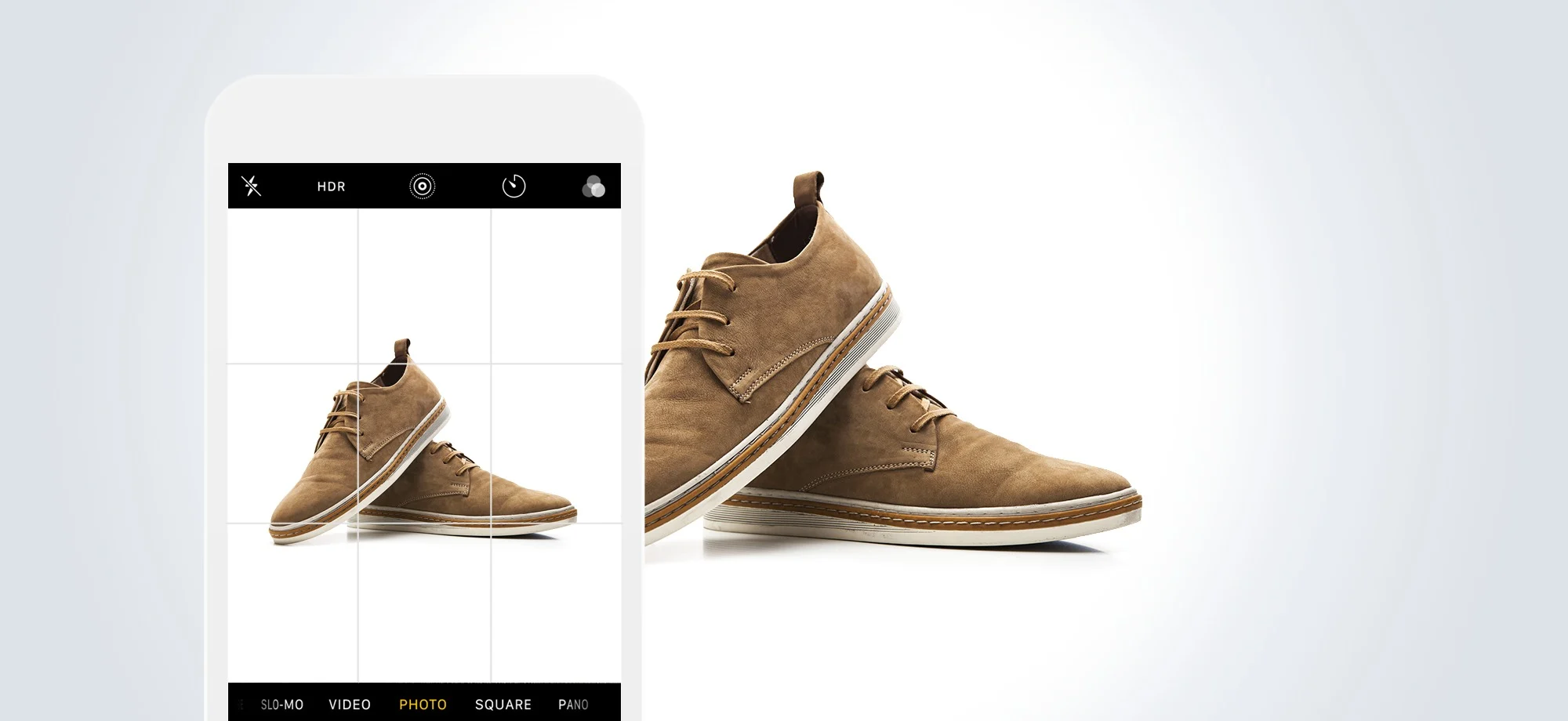
When it comes to retouching images, there’s no need for a lengthy intro. Nor are we going to bother with a discussion of fundamental image edits because we’ve already covered that in the others chapters in this guide and we’ll assume you are following general best practices.
If not, you can get caught up in the subsequent chapters where we cover:
How to build your own product photo studio (including the equipment you will need)
How to use your smartphone for product photos, if that’s all you have
How to shape light
How to add shadows
How to photograph highly reflective products
How to remove white backgrounds
How to master ghost mannequin photography
If you come across a term you don’t recognize, refer to our retouching glossary.
Instead, this chapter focuses on more advanced techniques, broadly categorized as retouching. We’ll walk you through popular retouching choices for three common ways to shoot apparel:
flat
on a mannequin or hanger
on model
Let’s focus specifically on garment retouching (divided into light, medium, and heavy levels), before finishing with a discussion of model skin retouching.
Note: This isn’t a how-to; it’s an exploration of what retouching is and what it can do for you.
We’ll discuss best practices, but just as in photography, many retouching decisions are driven by your brand’s aesthetic.
Outdoor apparel may call for a raw natural look, while luxury brands favor a more glamorous appearance.
We won’t try to make those decisions for you; we’ll simply present you with options and explain why each route might be favored.
At Pixelz we’ve edited over 15 million images for leading brands, retailers, and commercial photo studios. The principles we’re discussing here are based on our experience, but should not be taken to represent any of our clients. All opinions expressed are our own.
Garment Retouching
The principles of garment retouching are largely the same regardless of whether you’re shooting flat, on a hanger or mannequin, or on-model. Your biggest concerns are cleanup and shape.

No matter how much time a stylist takes on prep, samples aren’t going to be perfect.
When you’re shooting samples, well, your photos aren’t going to be perfect right out of the camera.
Your stylist may be able to fix some problems through product photoshoot preparation, pinning, and clever arrangements, but what do you do when the fabric is too sheer, the color is off, or one leg is longer than the other?
Retouching can solve problems that can’t be handled in the studio (as well as simplifying many that can).
Let’s take a look at some common retouching processes, broken down by level. We’ll also talk about two techniques that fall outside of basic level categorization:
symmetry
ghost mannequins
Light Retouching: The Fix It Up Process
Light retouching focuses on cleanup, which means removal and replacement of obviously unwanted details. In this scenario, there are few aesthetic decisions to be made and you’re essentially performing repairs.
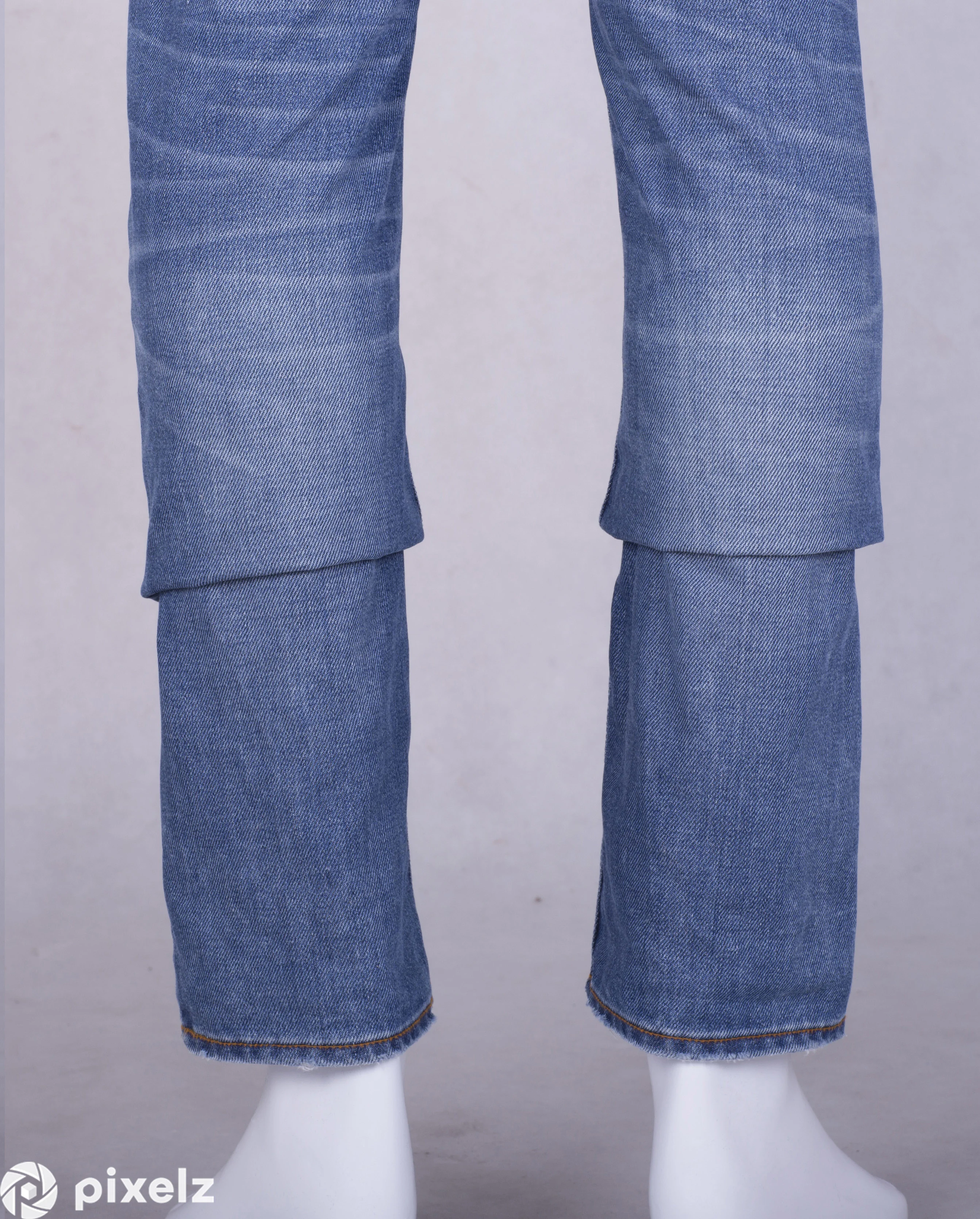
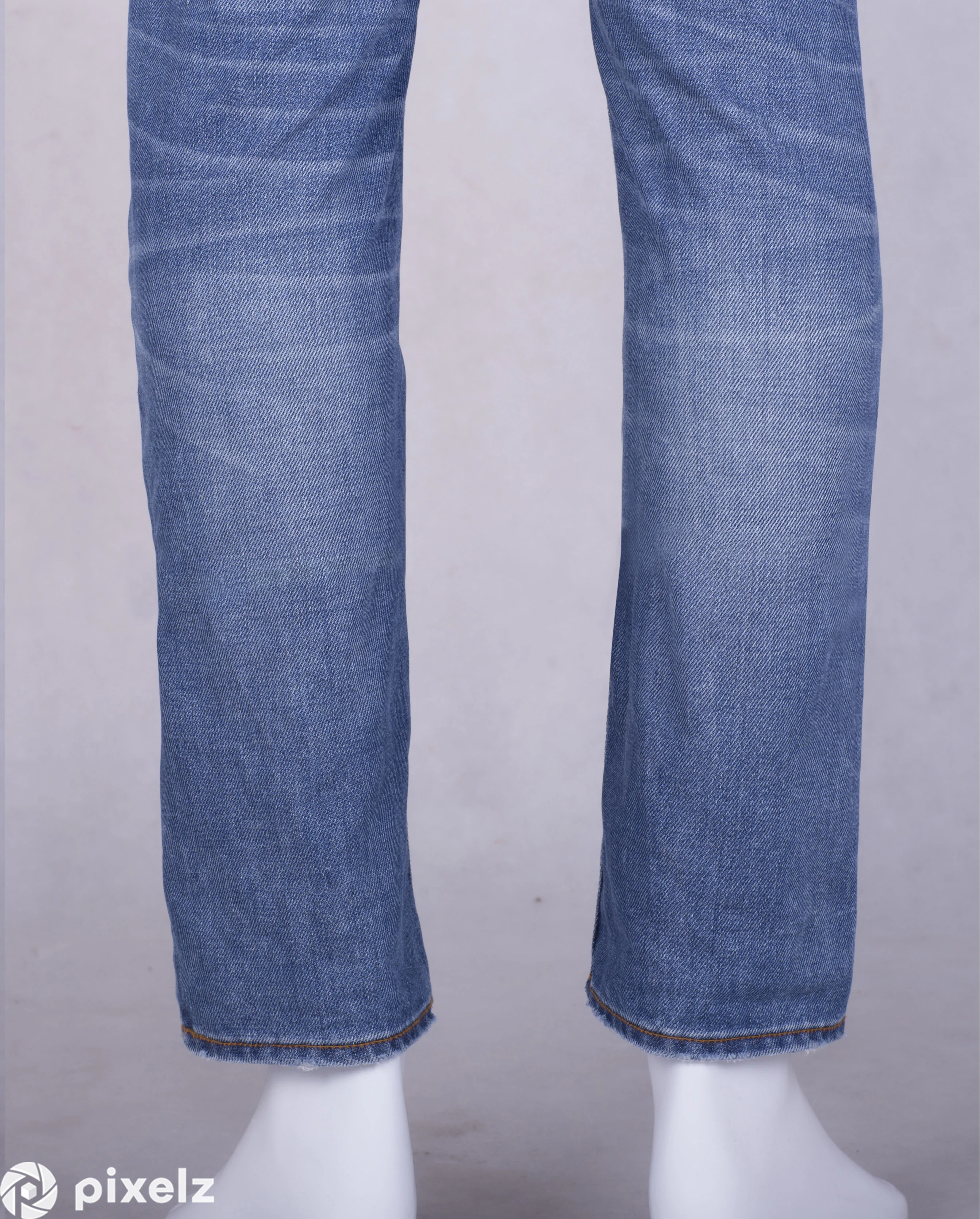
Before and after of jean legs retouched to erase creases caused by styling to strike mannequin ankle.
You should almost always remove evidence of styling, wear, and construction problems. That means removing dust, pins, untidy stitching, and loose threads. It also means removing heavy creases like packaging creases, or creases from styling (like if a trouser leg has been shortened by a stylist with a mid-leg fold).
Light retouching also involves recreating areas after removing small props, like hangers, wire hands, or mannequin cutaway necks.
When to use light retouching
If you have a modest budget, you should be performing this level of retouching. Showing someone a worn down sample with pins sticking out of the shoulders isn’t accurately representing your product.
Medium Retouching: The Low Hanging Fruit Process
Medium level retouching also focuses on cleanup, but starts to move into shape smoothing as well.
You’re doing everything you did at the light level, while also making more subjective/aesthetic decisions to proactively improve your image.
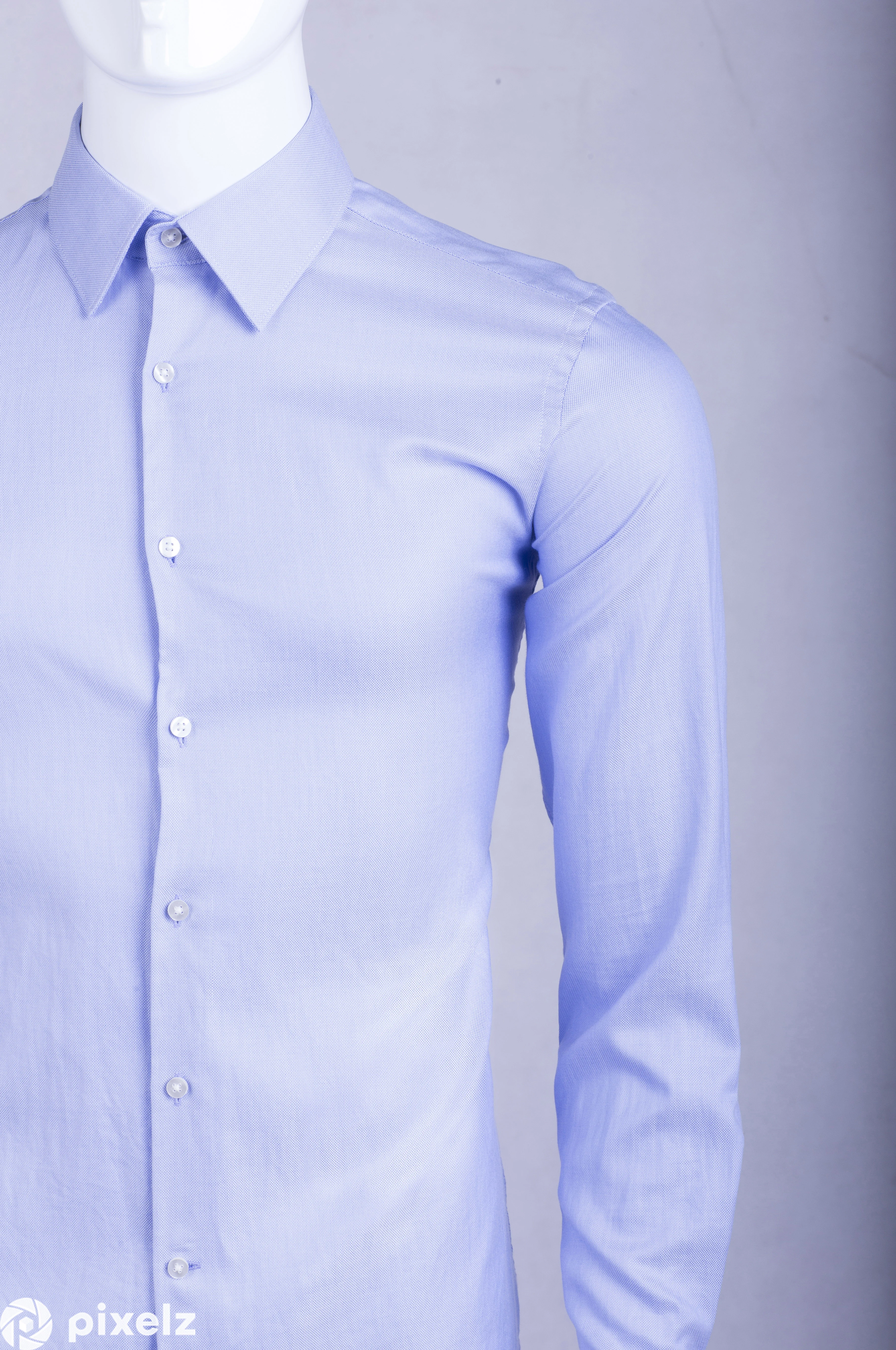
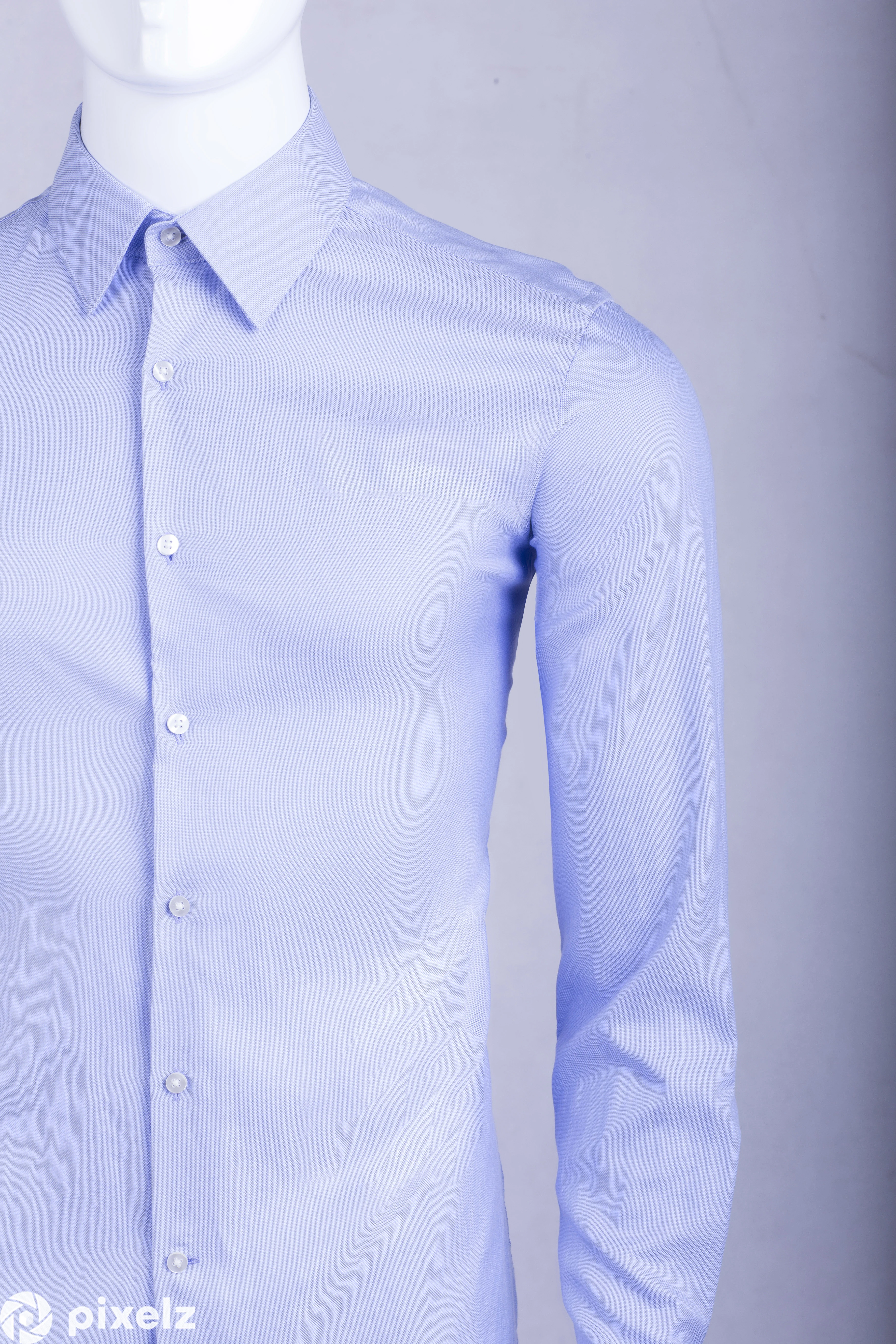
Before and after of retouching to remove crease caused by misfit; note armpit and shoulder area.
For example, you’re still removing packaging creases, but now you’re also removing creases and folds caused by misfit or styling challenges. Like, if a product fits a mannequin too tightly and creases are uneven on opposing sides of the body, you can reduce creases through retouching.
You’re also focusing on outer shape.
Shape is one of the most important parts of apparel product images, because it’s a demonstration of fit. Using retouching to smooth the edges of a garment, eliminating small bumps from an imperfect fit, is an excellent way to improve the presentation of your product.
When to use medium retouching
We recommend this level of retouching in most instances. You get all the cleanup of light retouching along with improvements that are relevant to almost all product images. If you have special challenges that aren’t addressed at this level, you can up the ante to heavy retouching.
Heavy Retouching: The Image Detailing Process
Heavy retouching focuses in on details like shadowing, imprints, and consistency.
Again, you’re doing everything you did at the medium level while adding additional retouching.
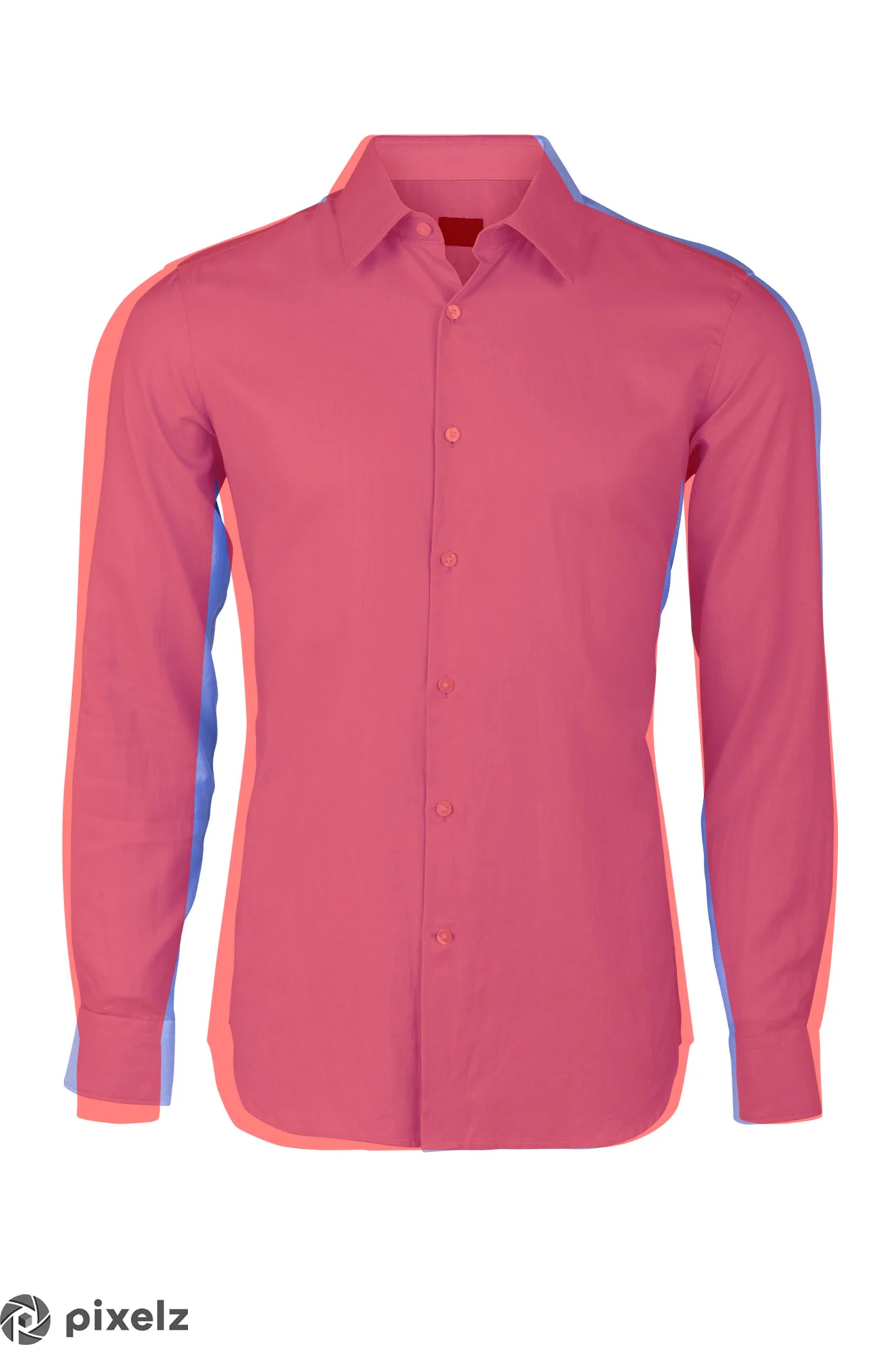

Using silhouettes for retouching can create extremely consistent shape.
Note that a heavily retouched image still isn’t one you look at and say, “Wow, that looks plastic!” That’s not heavy retouching, that’s bad retouching.
At no point should anyone ever look at one of your product images and think it’s fake. That immediately kills your credibility with the viewer, and with no trust there’s no sale.
To explain heavy retouching, let’s think about it in terms of creases, always one of the biggest issues addressed by retouching.
At the heavy retouch level, you’re not just removing obvious creases; you’re also reducing hard shadows, contrast, and highlights caused by creases. It’s a more subtle approach that can improve images with difficult fabrics, like laminated jackets.
Sometimes undesirable imprints can appear and create confusion about what’s part of a garment and what’s caused by outside factors. For example, sheer fabric can show visible outlines of mannequins, undergarments, nipples, and pockets. Retouching can eliminate those distractions.
Retouching can also ensure consistent shape is given to edge lines like sleeve cuffs, trouser cuffs, waistbands, and hemlines.
By consistent shape, I mean something like always curving in, curving out, or staying straight.
Consistency is pleasing to the eye and shows an attention to detail that builds credibility with customers.
Symmetry
Many human standards of beauty are based on symmetry; for example, numerous studies have proven that more symmetrical faces are considered more beautiful.
Why does that matter? Because it alludes to a psychological preference for symmetry by your customers (and likely, even, by you!).
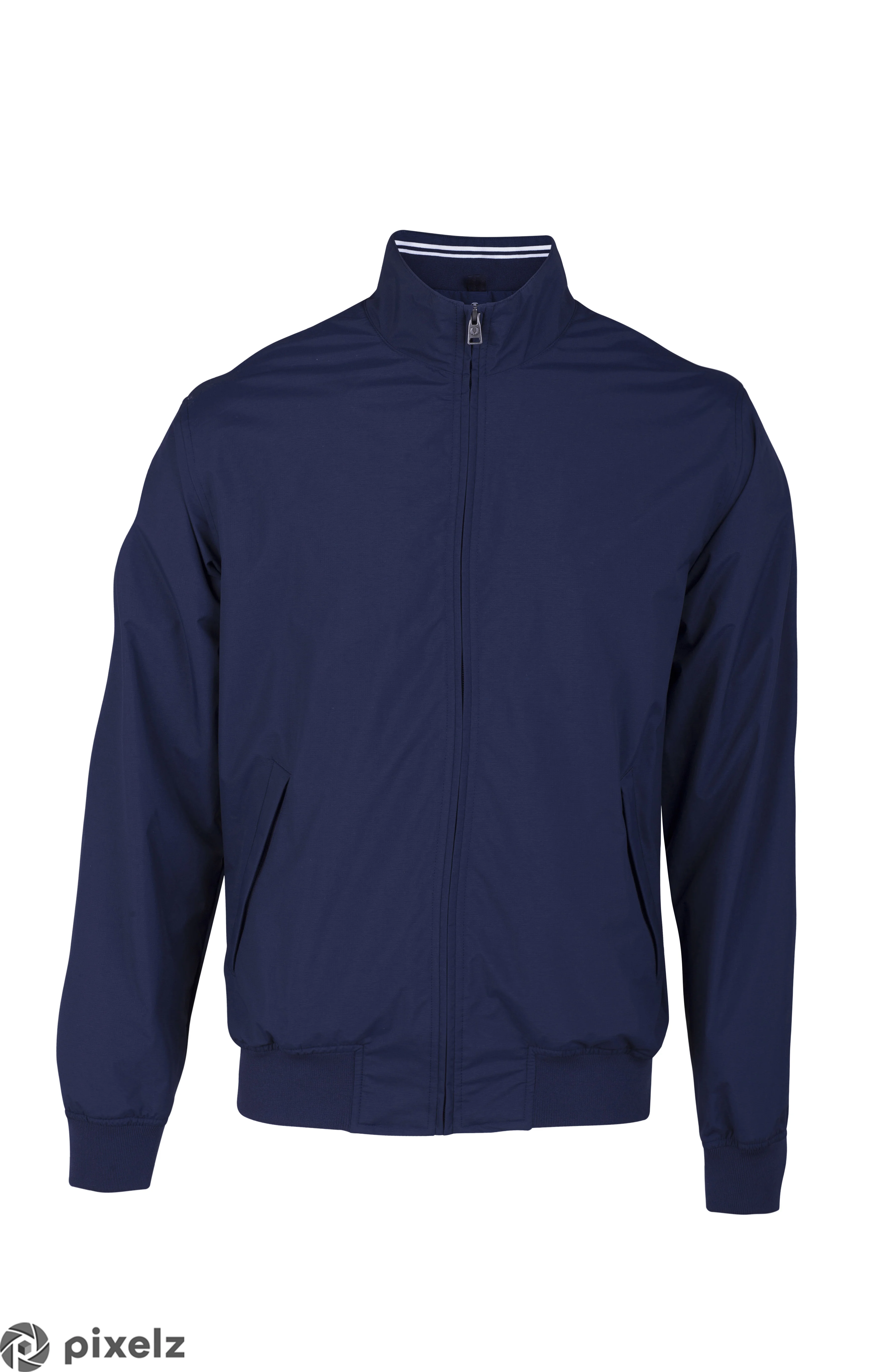
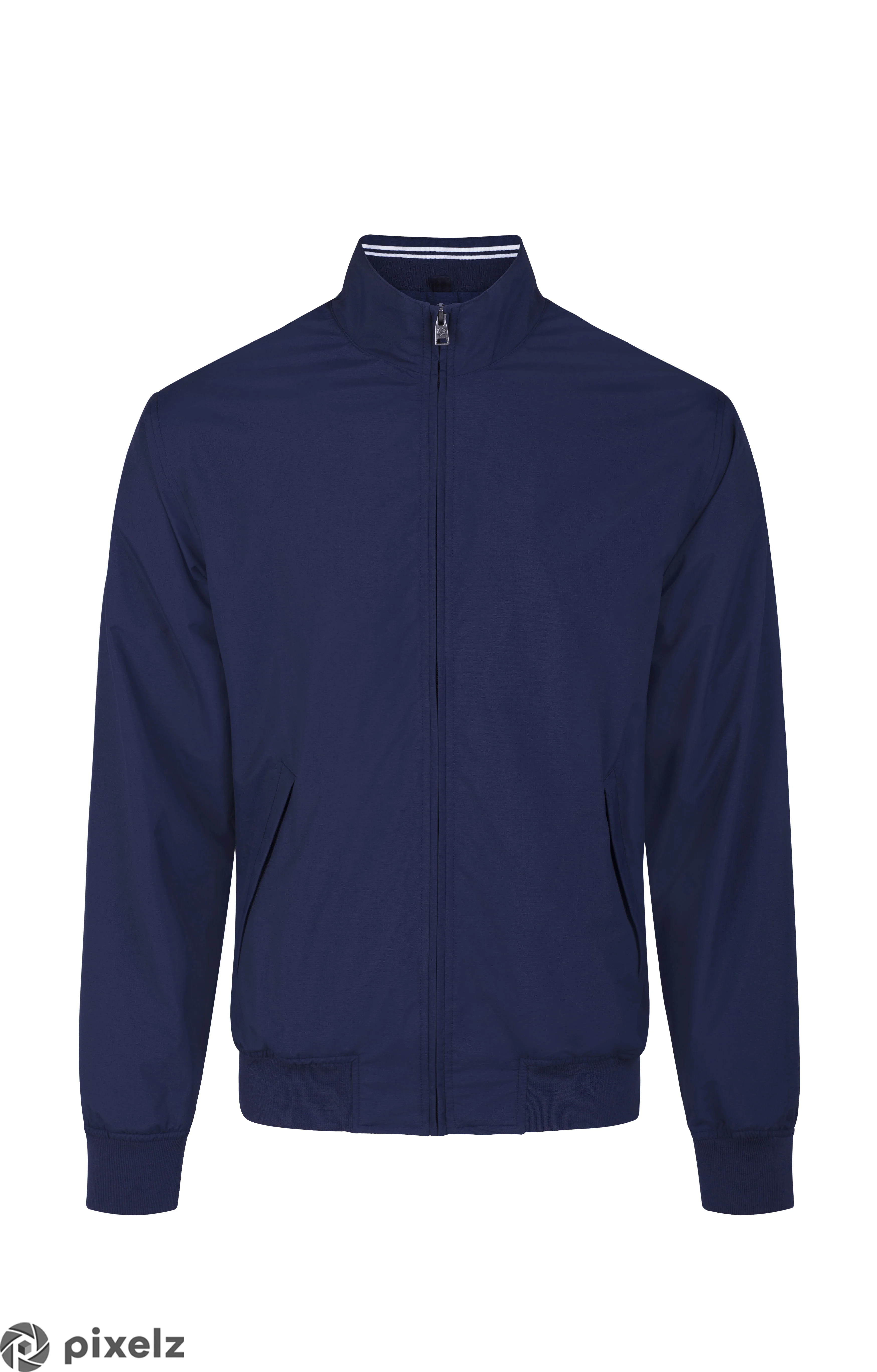
Before and after of retouching to ensure a symmetrical shape in product images.
When symmetrical apparel, like most jackets, dresses, tops, and pants, is photographed asymmetrically it looks sloppy.
Sometimes it creates a pronounced lean, or makes the quality of construction look poor. This is especially evident in product images shot on mannequin or on hangers, where there’s no implied human movement to make irregularities seem natural.
Symmetry can be applied in retouching by setting guidelines and applying them across your product category.
For example, for outerwear like a jacket we will:
Set a vertical axis
Match the height of major points like shoulders, armpits, sleeves, hems
Match the width of sleeves
Match the gap between sleeves and torso
Ensuring symmetry through retouching is one of the most beneficial things you can do to create a consistent, attractive presentation, and we recommend it regardless of the level of retouching.
Invisible / Ghost Mannequin
We’ve covered the invisible mannequin effect, aka the ghost mannequin, previously, but it is worth mentioning again.
In brief, the invisible mannequin is a post-production technique that combines two or more photos to create a single mannequin-free image. It has the advantage of demonstrating on-figure shape and showing more of the product than otherwise possible while minimizing distractions.
The invisible mannequin is a good option for retailers who need on-figure imagery but don’t want mannequins in their images or to use a increase budget on models.
Speaking of models…
Model Skin Retouching & Cropping
I’ve found that if you start a conversation about retouching (“You know, Photoshop”) with someone outside of the photography industry, 9 times out of 10 they jump straight to body image, advertising, and the harmful effects of unrealistic expectations for women.
We’re not discussing body shape here.
It’s a valid discussion, and one we’ve covered in depth in elsewhere, but this article is about skin retouching.
We’re not touching body fat or bone structure.
Before we dive into different aesthetics surrounding moles, skin tone, and eye bags, let’s briefly talk about a sometimes overlooked aspect of handling model images: cropping.
Cropping: Face or Faceless?
If you have model product images that are tops or full body, you may want to consider eliminating some headaches by the simple expedient of cropping them out.
A traditional crop for model images is at the top of the head. After all, a beautiful face helps sell product.
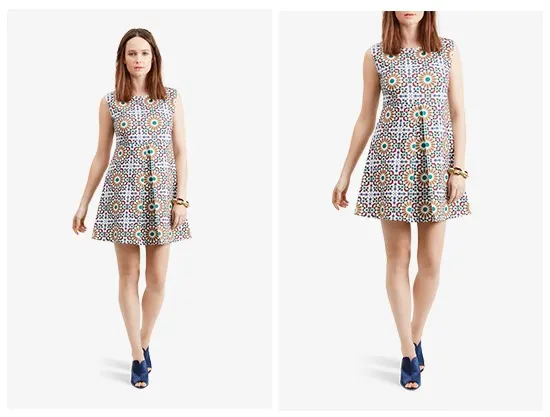
Cropping part of a model’s face affects usage rights, casting, product focus, and retouching.
However, cropping consistently at a different axis, like below the eyes, below the nose, or below the mouth has its own advantages.
1.Usage rights
Many models and agencies are open to granting rights to faceless images for longer terms than images featuring the face.
It’s pretty simple: an image where the model can’t be identified isn’t as valuable as an image where they can.
Please note that image usage rights can be complex. If it’s not directly addressed in your model release, don’t just assume you can crop out the model’s face and use it forever.
2. Model casting
You can cast a wider net when casting models if you’re focused on fit and don’t have to be as concerned about face. That can mean finding a better body fit and lower rates.
3. Product focus
Eyes draw the eye. If a model’s face is on the page, people will inevitably be drawn to that face. If they’re looking at the face, they’re not looking at your product. Crop below the eyes and you will retain a greater product focus.
4. Retouching simplification
Because the face is uncovered and naturally attracts close scrutiny, a disproportionate amount of retouching time is spent on it compared to other parts of the model. If you crop out most of the face, you don’t have to deal with flyaway hairs, eye bags, or as much acne, freckles, and general skin blemishes.
Regardless of where you choose to crop your model product images, you should be consistent. You will also have to decide what style of retouching you want to use for the rest of the model’s skin.
Skin Retouching: Know Thyself
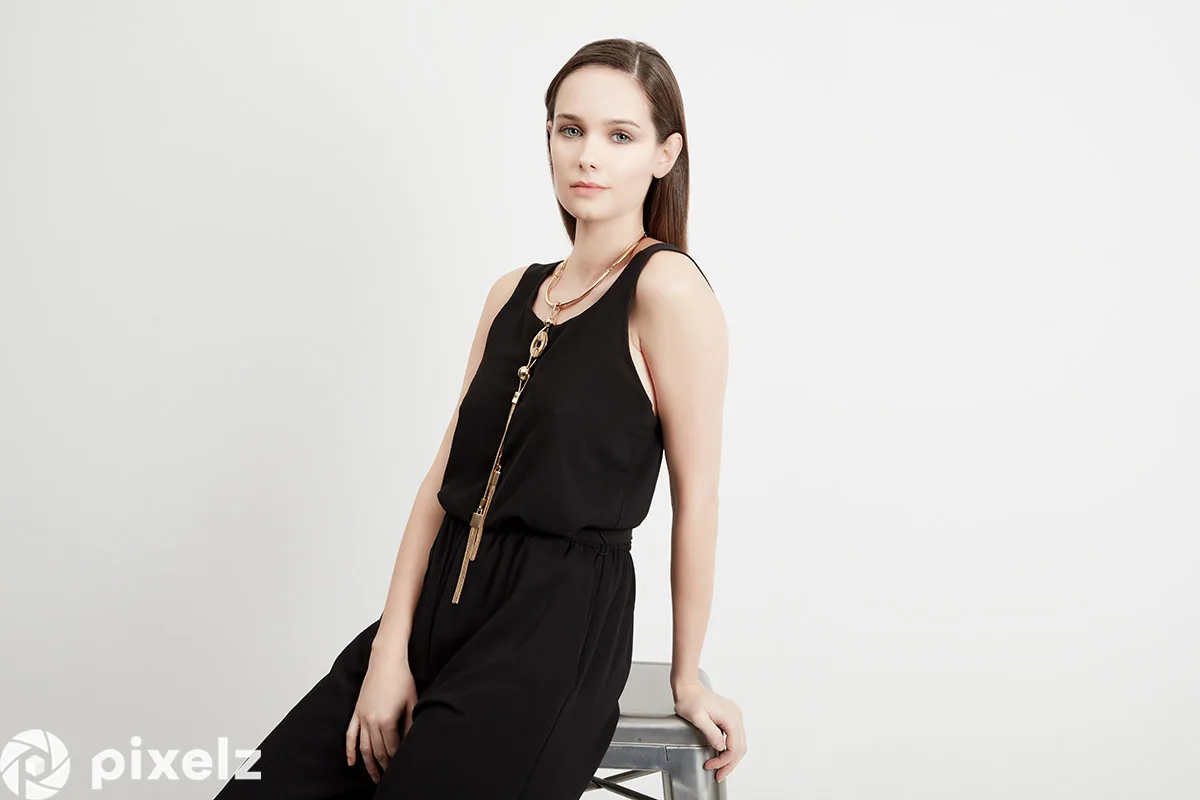
Skin retouching is about understanding your brand’s aesthetic and staying true to it. It’s less about “how much” you want to retouch, and more about making sure the retouching you perform reinforces your brand.
For comparison, let’s look at two different styles of skin retouching:
Natural
Classic
They require a similar level of effort and hence will cost you about the same should you hire a professional retoucher or service.
Natural Skin Retouching – Here Today or Here Forever?

Natural retouching leaves most moles and freckles because they’re a permanent feature of a model’s skin.
If you’re an outdoor apparel brand that prides itself on looking great while getting down and dirty, you don’t want your model’s face to look like it’s in a cosmetics’ ad.
The guiding principle for natural retouching is that less is more.
You’re retouching to remove distractions, but if you go too far, you will actually create a distraction by becoming obviously inauthentic. Natural retouching should be subtle.
Do’s and Dont’s
Check out these do’s and don’ts of skin retouching.
The two major parts of skin retouching address:
Skin tone and texture
Marks and blemishes
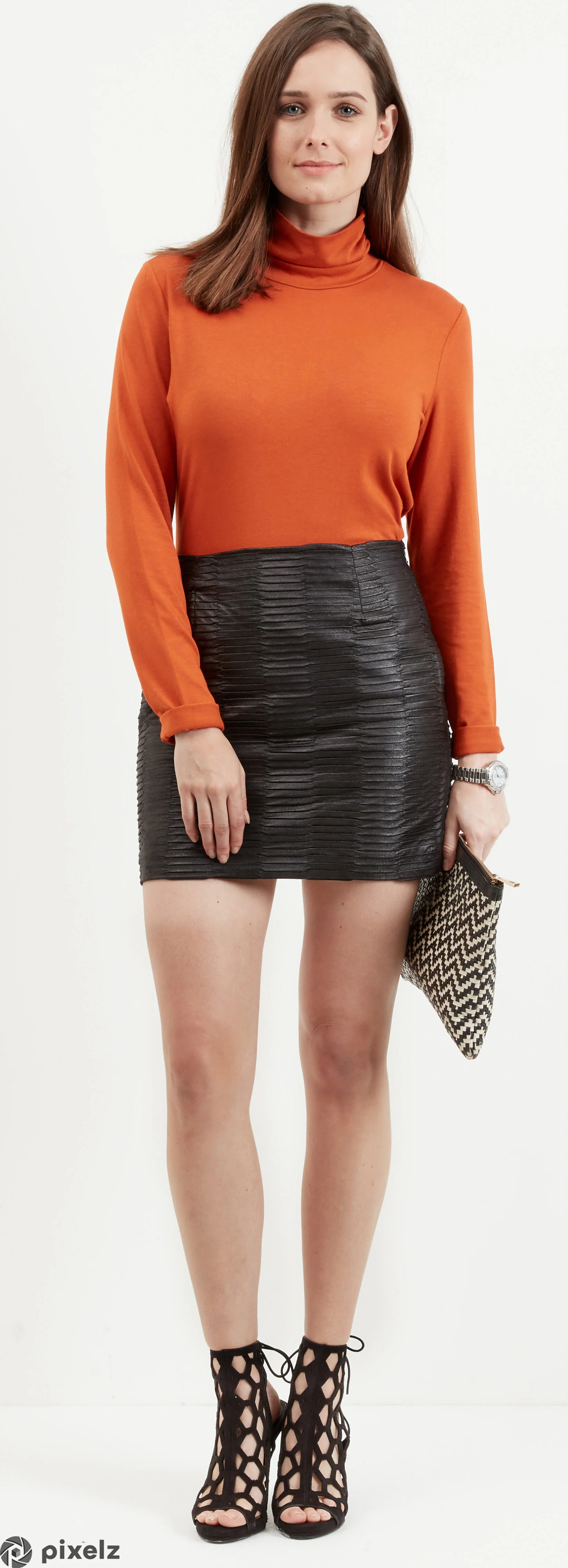
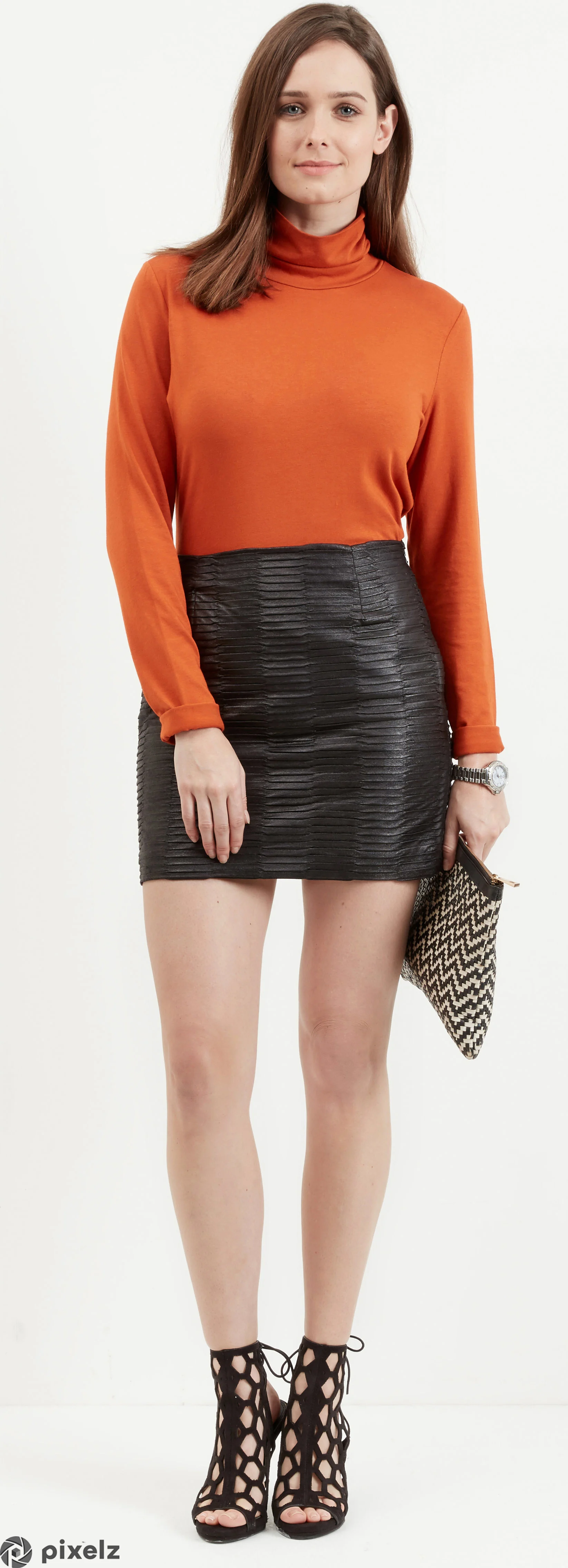
Note model’s thighs. Tone of the face has been taken and the rest of skin retouched to match.
An effective approach to skin tone is to simply even it out over the entire body. Nobody tans evenly, and when a model is standing all day under bright lights, circulation will become poor and extremities redden (particularly hands).
Picking a neutral area, like the face, and then adjusting tone elsewhere to match that reference will create a more attractive photo.
When I say “blemishes,” I mean acne, moles, bruises, scratches, birthmarks, freckles, and other marks on the skin. Natural retouching focuses on reduction rather than removal, usually following a temporary vs permanent rule:
Is it here today, or here forever?
Answering that question tells you what to do with a blemish, if you’re following natural retouching principles.
Acne and bruises are temporary. If you’re removing them, you’re not fundamentally changing your model’s skin. They usually don’t have those marks.
On the other hand, a scar or birthmark is a permanent part of the model. Leaving blemishes like that, unless they’re so prominent as to be distracting, stays true to your model’s character.
Run that rule over your model’s skin and what seemed vague and subjective becomes a much simpler standard.
Goosebumps? Temporary, gone.
Freckles? Permanent, keep them.
Classic Skin Retouching – Remove Blemishes, Soften and Smooth Skin
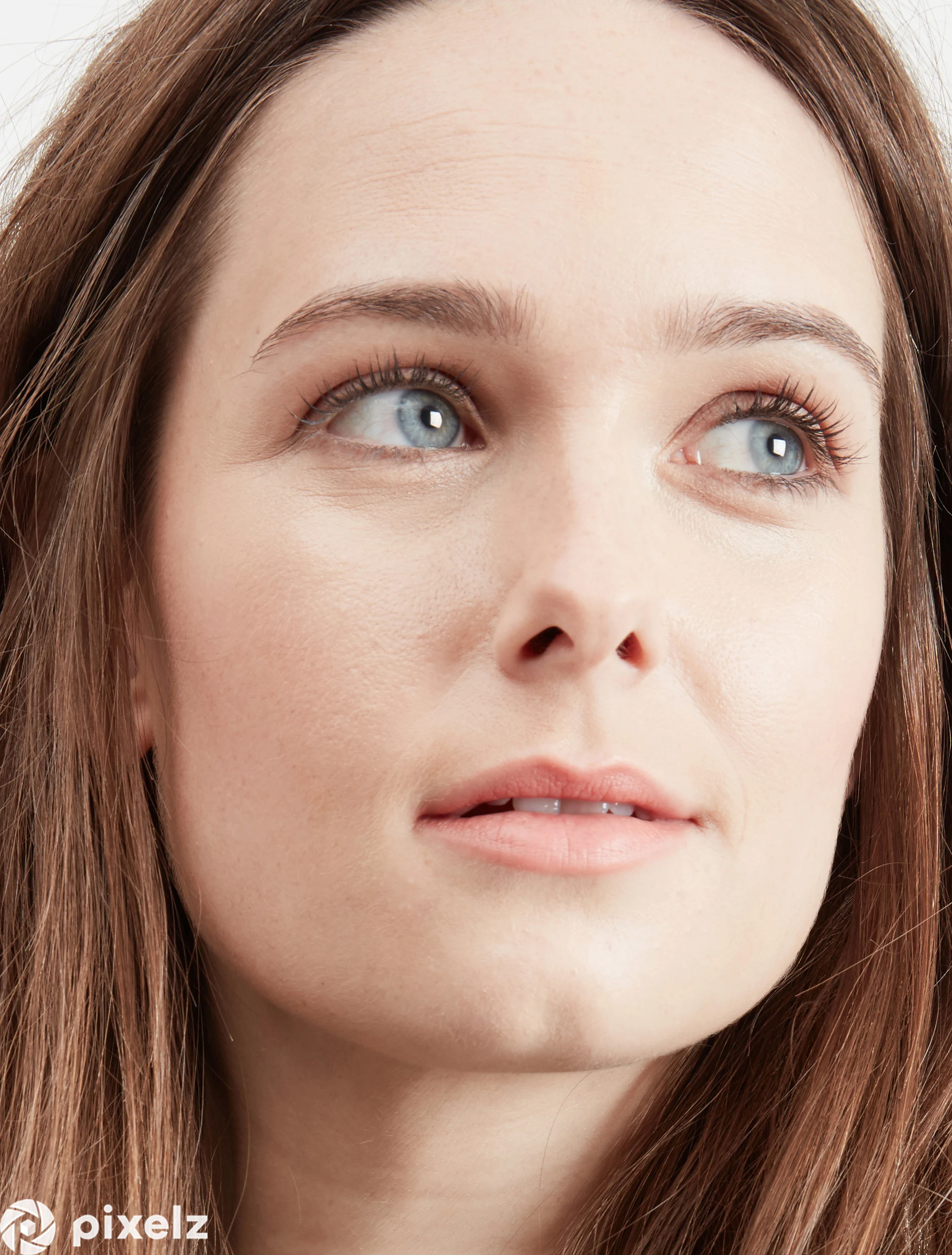
Classic retouching removes most moles, freckles, and other blemishes.
Have you ever watched a movie on a brand new HDTV and had that “too real” feeling? Where the picture is so sharp and smooth that it actually looks worse, like the latest Hollywood special effects blockbuster is a soap opera?
Classic retouching can help you avoid a similar feeling in your product photography.
Incredibly high definition cameras and powerful lights can create a photo that counters an audience’s expectation of what a product image should be.
Classic retouching doesn’t usually bother with evening out skin tone unless there are notable differences. Rather, all skin is softened and smoothed to create the aspirationally perfect skin expected of a cover model.
Most blemishes are removed in classic retouching, like freckles and prominent moles, but not all of them. It’s good to leave less noticeable moles or the occasional freckle to keep a feeling of familiarity.
Again, you never want to go so far that an image feels fake.
How To Get Your Images Retouched
Now that you understand what retouching can do, the next question is how to get your images retouched cost-effectively.
There are basically two options:
in-house
outsourced
In-house means doing it yourself, hiring full-time retouchers, or hiring freelancers. All three options are time consuming, expensive, and don’t scale well (seasonal shoots cause frequent bottlenecks). They do, however, usually give you tight control and good communication.
Traditional outsourcing offers lower prices and more scale, but at the risk of inconsistent quality and poor communication. If you end up with the wrong outsourcing solution, it will drain you of time and resources without actually improving your quality.
Outsourced Options
Pixelz is a professional retouching solution that gives you the control and communication of in-house editing through a fully developed web platform and professional support.
A plan like Pixelz PRO Retailer offers product-specific retouching options, next-morning turnaround times, and prices starting at less than a dollar per image. You can try Pixelz out with 10 free retouched images of your choice.

Thomas Kragelund is the CEO and founder of Pixelz, a leading product image solutions partner for internet retailers, bloggers, designers, photographers and webmasters worldwide. He has been working in ecommerce for the last 15 years. Sign up today and get 3 product images edited for free.


